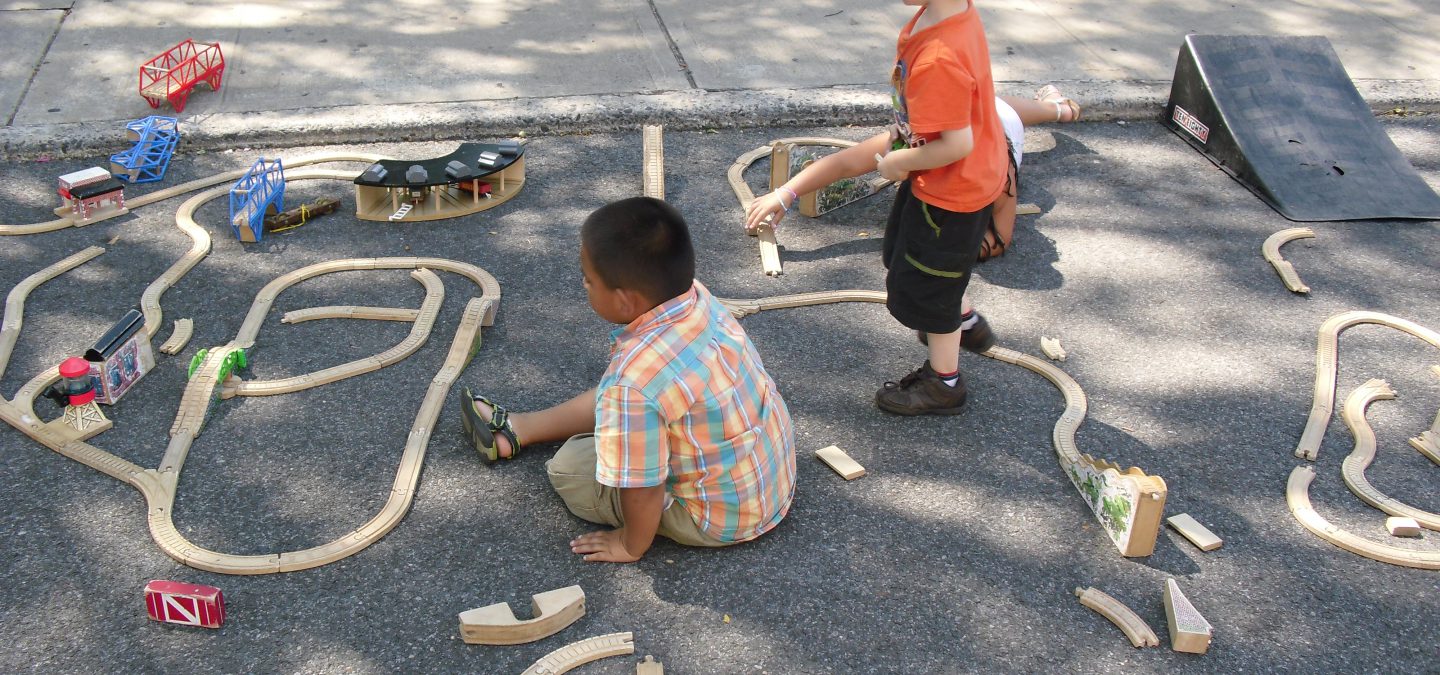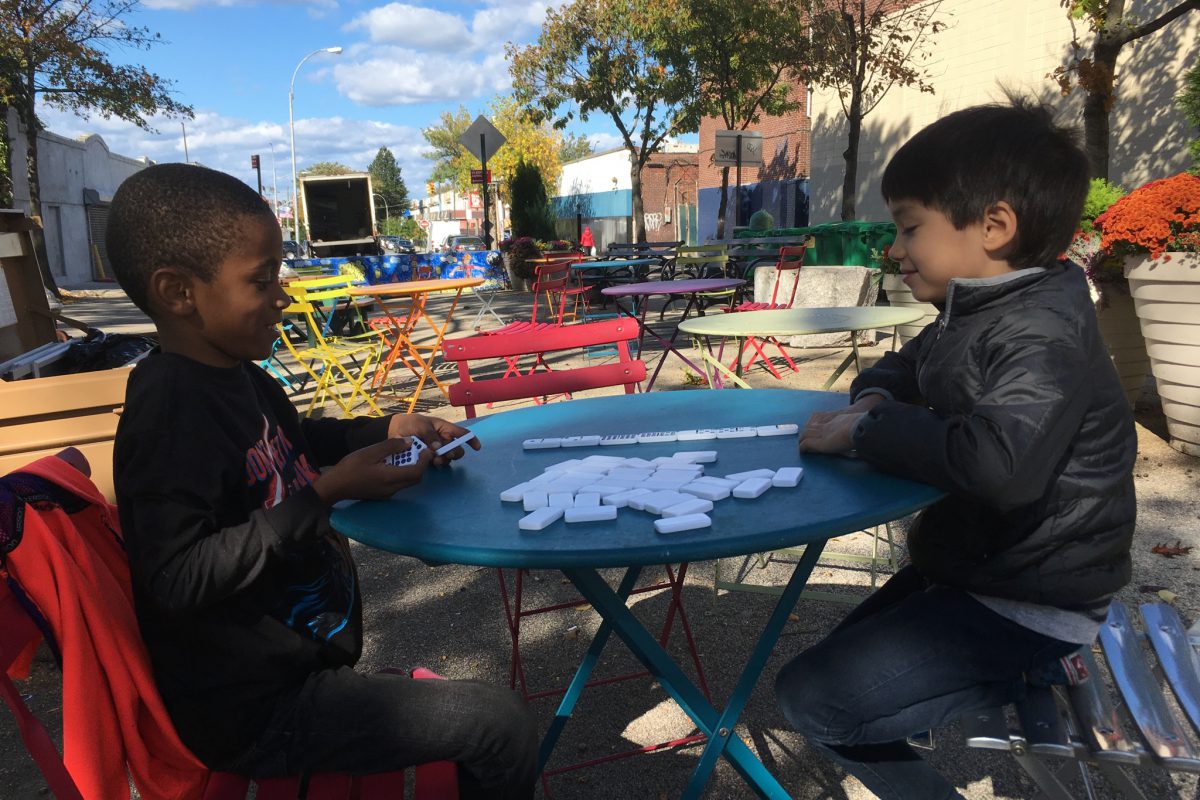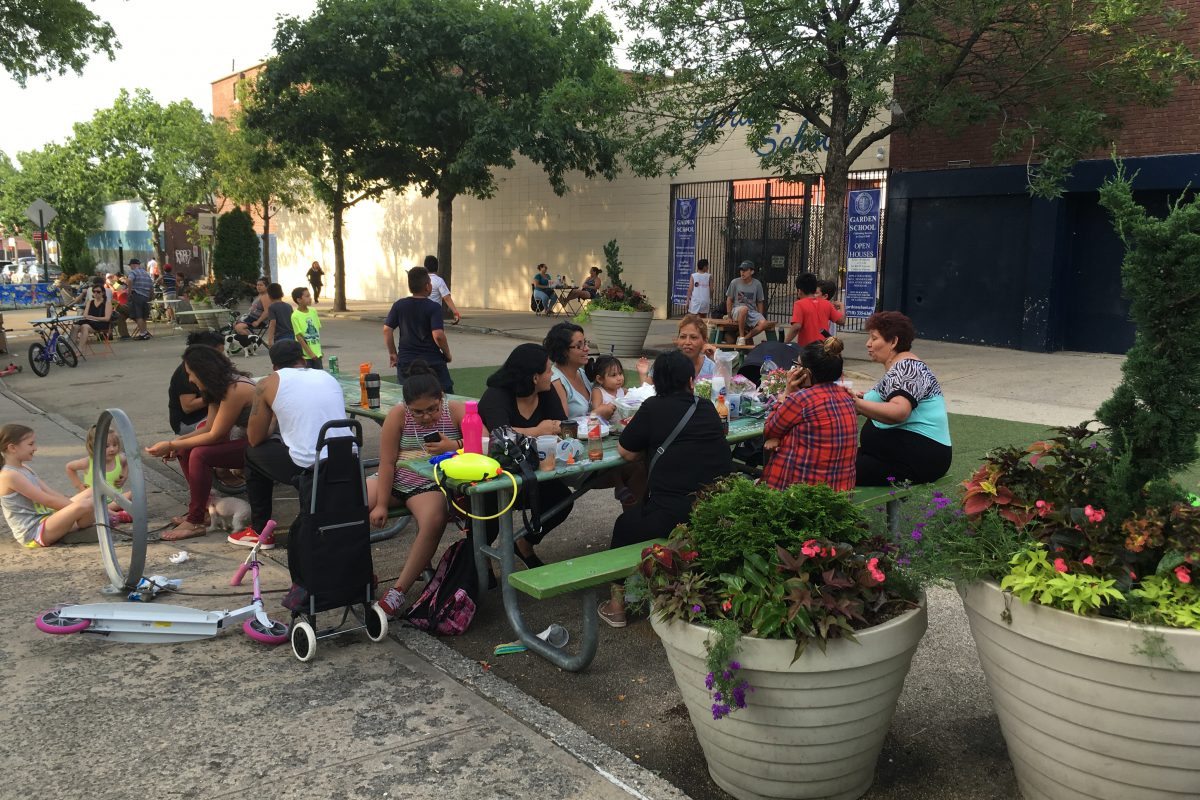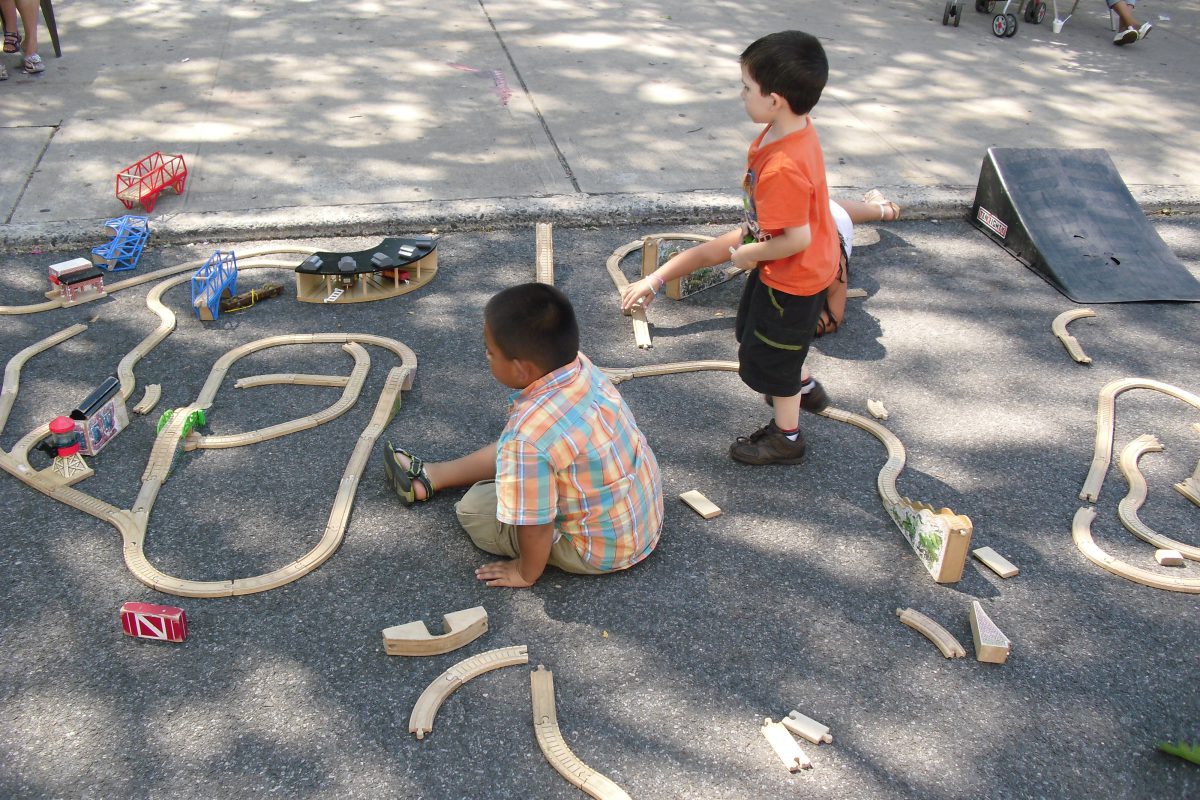
Keep up with our latest news and projects!

Jackson Heights is a dense urban neighborhood in the New York City borough of Queens and is famous for being one of the most racially and ethnically diverse places in the world. In 2007, I helped create a non-profit group, the Jackson Heights Green Alliance, to advocate for creating more public space in the neighborhood. In 2010, we contracted with the city to manage a new public plaza, created by eliminating traffic from a 130-meter section of 78th Street along the east side of the neighborhood’s only public space: a small playground called Travers Park.
While the playground caters mostly to the narrow needs of small children and people wishing to play active sports like volleyball, tennis or cricket, we envisioned the new plaza as a place where people could enjoy passive activities like eating lunch on a pleasant day or reading the Sunday newspaper. Working with the city and raising our own private funds, we installed colorful plants, multiple types of seating, and other basic amenities creating a car-free public space just off a major automobile thoroughfare.
To our surprise, in addition to adults seeking a quiet respite, the plaza has also become a favourite destination for teenagers and pre-teens who have few spaces in the neighbourhood or the adjacent park designed for their needs. The plaza has become a crossroads where people of all ages feel welcome. It is one of the only places in the neighbourhood where you will regularly find young children, teenagers, childless adults and elderly residents co-existing naturally. Based on years of observation and conversations with people who use the plaza, a few insights have emerged that we think can be useful when designing public spaces that facilitate interaction among various age groups. In the City at Eye Level approach, these lessons relate to how the space is used (the software), how it is designed (the hardware) and how it is managed (the orgware).

The software of the space includes the rules that govern what is allowed. As a small community group, we had a very limited budget. Unlike other public plazas in the city that are managed by private property owners or Business Improvement Districts with highly corporatized aesthetics, heavy-handed security, and strict rules, our plaza is a decidedly do-it-yourself project. The space is clean, colourful and well-maintained, but relatively utilitarian. There is no security or monitoring, and no posted rules. As a result, space feels welcoming for people of all ages, perhaps particularly for teenagers, who are often assumed guilty until proven innocent but often just want a place to sit and talk (albeit loudly!). But this is also true for other users. For instance, an ominous metal
sign in the adjacent playground states that no adults are allowed unless accompanied by a child. But everyone is welcome to use the plaza and, as a result, the interaction of various age groups is easily facilitated.

The hardware, or physical design is also important. While playgrounds are typically designed to accommodate sports and active play, the plaza is a blank slate that can be adapted for age-appropriate uses. Teenagers may use one of the large picnic tables for raucous debates, while the adjacent table hosts a toddler’s birthday party. Skateboarders and parkour enthusiasts utilise the utilitarian design features in their own creative ways. Younger children imagine the large stone blocks scattered around the plaza as pirate ships, dinosaurs and racecars. The café tables are regularly repurposed as lemonade stands or to play with games or toys brought from home.
Finally, the orgware. The fact that the space is managed and operated by community members and not a government or corporate entity is, we believe, central to its success. We strive to involve neighborhood residents in decision-making about the space and we have held dozens of free public events including concerts, art workshops, bicycle repair clinics and Halloween parties. Because of this, people feel a sense of pride and ownership of the plaza. Despite the occasional act of vandalism, most users treat the plaza as something that belongs to “us” and not to “the city.” When we are sweeping up or fixing a broken piece of equipment, someone always volunteers to lend a hand and very often that person is a young child or a teenage skateboarder.

Our experiences on 78th Street illustrate how public space can be designed to better accommodate users of all age groups and strengthen social ties among residents. Specifically, finding ways to “un-design” public space can facilitate multiple and creative uses instead of narrow or proscribed activities and expand the appeal to multiple constituencies. At the same time, our experience suggests that it is also important to engage people of all ages in the creation, design, and management of public space, providing a sense of ownership, agency and community pride.
This article belongs to a series of stories about the city at eye level for kids! You can access the full book online in PDF or pre-order your hardcopy to be delivered to your home.
Get your book here